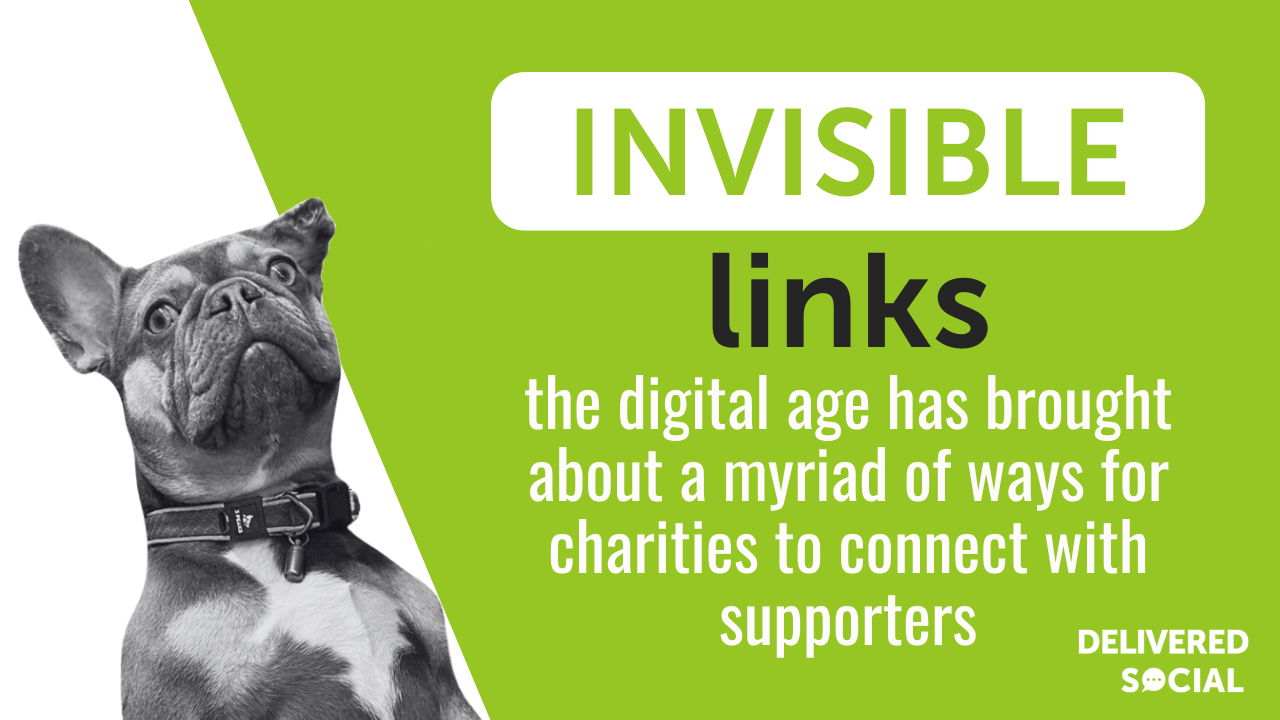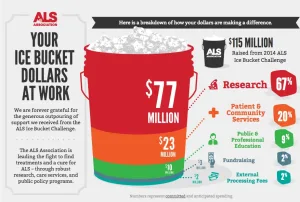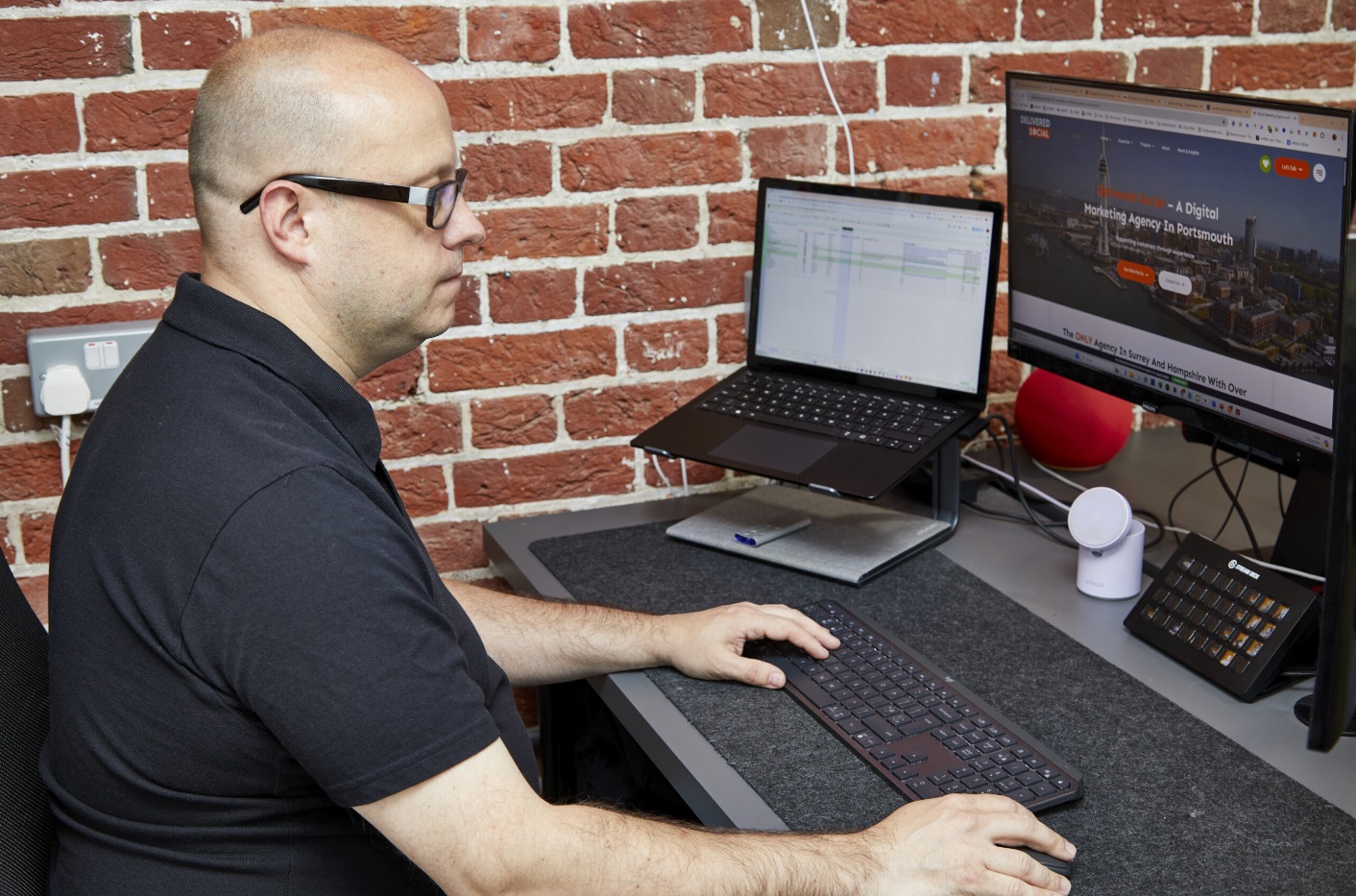
We’ll cover:
- How Does Social Media Affect Charities?
- Harnessing the Power of Virality
- Amplifying the Voice of Charities: The Social Media Megaphone
- The Age of Transparency and Accountability
- Building and Nurturing an Online Community
- The Double-Edged Sword: The Challenges of Using Social Media
- Avoiding the Pitfalls: Mitigating Risks on Social Media
- Embracing the Change
How Does Social Media Affect Charities?
The digital age has brought about a myriad of ways for charities to connect with supporters, from online donation portals to virtual fundraising events. But one medium stands out above the rest – social media. The invisible link binding charities with potential donors, social media can be a powerful tool when wielded correctly. But how can social media impact charities? Dive into this article to learn more.
Harnessing the Power of Virality
One of the most dynamic aspects of social media is its ability to instigate a viral sensation. Social media platforms have the capacity to disseminate information quickly and broadly, creating an impact far beyond what traditional media channels can achieve. This characteristic of virality holds immense potential for charities, as it provides opportunities for rapid growth and substantial exposure.
Virality can be a game-changer for charities. When a campaign, story, or event goes viral, it can result in an exponential increase in donations and new supporters. One of the most memorable examples is the ALS Ice Bucket Challenge. This viral sensation took over social media during the summer of 2014, raising over $115 million. It was not just the funds that were remarkable but the heightened awareness about a disease that was previously unknown to many. The challenge showed us that an innovative idea, coupled with the power of social media, can create a groundswell of support that resonates globally.

How does social media affect charities?
The ALS Ice Bucket Challenge even reached the stage of virality where celebrities were taking part and offering huge donations. Remember Charlie Sheen’s attempt in which he broke the trend by pouring ‘$10,000′ cash over his head before nominating his Two and a Half Men Co-Stars and show-runner, Chuck Lorre? By the end of August 2014, Sheen’s video earned over 16 million views, surpassing the views on Bill Gates’ attempt! Now, imagine that was a trend started by your charity, sharing your message. 9 years on, the power of social media marketing increased… A lot!
However, harnessing this virality is not as simple as it may appear. To make a campaign go viral, it needs to tap into emotions, be easy to share, and ideally, involve an action that people can recreate and make their own, just as the Ice Bucket Challenge did. Furthermore, it’s important to recognise that virality isn’t necessarily sustained. The rapid surge in interest can fade as quickly as it rose, making it crucial for charities to have a strategy in place to convert those one-time supporters into long-term advocates.
The power of virality on social media can be transformative for charities. It can open doors to broader audiences, increase funds, and raise awareness on an unprecedented scale. However, it is important to be prepared for such an event. If you are aiming to go viral, it’s important to ensure that you are ready. Charities must be prepared for the scale of response a viral campaign may incite. From ensuring there are enough resources to manage a surge in donations to being equipped to handle a sudden flood of media attention, going viral can be a double-edged sword. To leverage virality effectively, careful planning, strategic thinking, and preparedness are key.
Amplifying the Voice of Charities: The Social Media Megaphone
In the complex world of communication, standing out and making your voice heard can be challenging. This is particularly true for charities, which often operate on limited budgets and in crowded sectors. But, social media has reshaped this landscape, serving as a megaphone that amplifies the voice of charities to far-reaching corners of the globe. How does social media affect charities in this regard? It gives them a direct channel to communicate with their supporters, bypassing traditional media gatekeepers and connecting on a more personal level.
This direct line of communication allows charities to share their stories – stories of the lives they’re changing, the projects they’re initiating, and the communities they’re uplifting. These narratives are the lifeblood of any charity, creating an emotional connection with supporters and inspiring action. Social media allows for these stories to be shared in real-time, bringing a sense of immediacy and relevance that other forms of communication struggle to achieve.
Furthermore, social media gives charities the power to shape their own narratives. They control what they share, how they share it, and when. This ownership over their messaging is critical in a world where perceptions can shape reality. Charities can actively demonstrate their impact, showcase their integrity, and cultivate their image, all on their own terms.
Engaging in direct dialogue with supporters is another benefit. Supporters are no longer passive recipients of information; they’re active participants in a two-way conversation. This interaction fosters a sense of inclusivity and engagement, turning supporters into advocates.

How ALS Utilised Social Media to Grow Their Message
The impact of social media on charities extends far beyond fundraising. It’s a platform that amplifies their voice, shares their stories, and fosters direct engagement, revolutionising the way they communicate and connect. The Royal National Lifeboat Institution (RNLI) boasts an impressive presence on TikTok, with a substantial following of over 196,000 users. Their official account has garnered more than 2.2 million likes across numerous posts. One of their standout videos, capturing a rescue mission, has amassed a remarkable 5.2 million views, 115.4K likes, and over 1600 comments. This particular video showcases live footage filmed on a chest-mounted GoPro, providing a captivating and immersive experience for the audience. By offering a personal and unique perspective of their charitable work, the RNLI not only highlights the vital role sustained by donations but also introduces viewers to an intriguing and potentially unseen side of their operations.
They understand the importance of actively engaging with their audience. In a strategic move, they took the time to respond to nearly all of the comments on their rescue video (especially the negative ones), resulting in a significant boost to the comment section. This clever tactic not only encouraged a sense of connection and interaction but also had a remarkable effect on their video’s reach. By actively engaging with their viewers, the RNLI amplified the visibility of their content, ultimately exposing it to a much larger audience. It’s a smart move that pays off in terms of building a thriving online presence. Read more of our blogs to learn more ways to Engage Your Social Media Audience.
The Age of Transparency and Accountability
We live in an era where the demand for transparency and accountability has reached new heights. Paired with the cost of living crisis, people want to know where their money goes when they donate to a cause, how it’s used, and what impact it has. Social media provides an unmatched platform for charities to meet these expectations and foster a sense of trust among supporters.
One example of this transparency can be seen in the actions of Charity: Water. They have effectively utilised social media to demonstrate accountability. For every project they undertake, they share GPS coordinates, photos, and details about the community served. Supporters can directly see where their contributions are going and the difference they are making. This not only strengthens the connection between the charity and its donors but also instills confidence that every penny is being put to good use.
Another example can be found in the work of the Royal National Lifeboat Institution (RNLI) in the UK. RNLI routinely uses Twitter to share real-time updates on their rescue operations. By providing live updates, they allow followers to see the immediate impact of their work. This not only promotes clarity and shows where funding goes (i.e. into life-saving operations) but also demonstrates the urgency and importance of their work, encouraging further trust and support.
These examples highlight how social media can serve as a tool for charities to demonstrate transparency and accountability, strengthening trust and promoting long-term supporter engagement. The charities that can effectively navigate this era of transparency are the ones that will succeed in building strong, enduring relationships with their supporters.
Building and Nurturing an Online Community
One of the most potent aspects of social media lies in its ability to foster a sense of community. For charities, this means more than merely broadcasting their message to a vast audience; it’s about creating an online space where supporters, volunteers, and beneficiaries can connect, engage, and feel a sense of belonging.
When asking the question ‘How does social media affect charities?‘, it’s important to consider the features of the different platforms and how they can be used to benefit your organisation. As previously mentioned, comment management is a huge aspect of nurturing your audience on social media, but it’s not the only tool a charity can use. Facebook Groups and web forums, for example, provide an excellent platform for building and maintaining an online community. With over 1.8 billion people using Facebook Groups every month, it’s a feature that cannot be overlooked.
An example of a charity effectively utilising Facebook groups and web forums is Macmillan Cancer Support. Their group, ‘The Online Community,’ is a safe and supportive space where people affected by cancer can share their experiences, offer support, and find comfort in knowing they’re not alone. The group currently has over 70,000 members, making it one of the largest online communities of its kind in the UK.

RNLI and Their Use of Social Media
This group serves multiple purposes. It provides valuable peer-to-peer support to those affected by cancer, which is integral to Macmillan’s mission. It also allows the charity to engage directly with their community, facilitating discussions, answering queries, and providing information about their services.
Moreover, the group acts as an ambassador for the charity’s work. Members often share their positive experiences with Macmillan’s services, providing organic, trusted testimonials that can inspire others to support the charity.
By maintaining active engagement in the group, Macmillan fosters a sense of belonging among its members, transforming them from mere supporters to committed advocates who feel personally connected to the cause.
Building and nurturing an online community is an essential facet of how social media can benefit charities. It goes beyond direct communication, promoting a sense of belonging and mutual support that can drive deeper engagement and long-term advocacy for the cause. Looking for more top tips on how you can speed up the process of growing your account? Look no further, Growing Your Social Media Accounts with the 5x5x5 Method
The Double-Edged Sword: The Challenges of Using Social Media
While social media brings numerous benefits to charities, it also presents its own set of challenges. Its rapid spread of information can become a double-edged sword when that information is incorrect or misleading.
Misinformation on social media has the potential to cause significant harm to a charity’s reputation. Take, for example, the case of the British Red Cross. In the aftermath of the 2010 earthquake in Haiti, false claims spread across social media that the Red Cross had misappropriated funds meant for disaster relief. Even though the organisation rebutted these accusations with facts and figures, the damage was done. The speed and scale at which the false information spread eroded public trust and had a detrimental impact on the charity’s reputation. Now, picture that same misinformation spreading on social media in 2023; it wouldn’t be pretty.
Negative comments and reviews can also have an amplified impact on social media. Given its ‘always-on’ nature, a single negative post can quickly gain momentum, leading to a snowball effect that’s hard to control.
This can also can put a strain on a charity’s resources. Particularly for smaller charities, maintaining an active social media presence, responding to comments, and managing online fundraising can be time-consuming and require expertise they may not have.
While social media can be a boon for spreading a charity’s message and garnering support, it also requires careful management and crisis preparedness. Charities need to be vigilant about their online presence, ready to combat misinformation swiftly and effectively, and prepared to manage potential reputational risks that can arise in social media in this day and age. This aspect adds a new layer of complexity to the question, “How does social media affect charities?” but it’s an integral part of navigating the digital landscape. For more information on ‘Making the Most Out of Your Social Media Page’ follow the link!
Avoiding the Pitfalls: Mitigating Risks on Social Media
Just as charities prepare for any other risks they may face, they must also be equipped to manage the potential challenges social media can pose. Here are some strategies to avoid falling into these pitfalls:
Have a Clear Social Media Policy
A comprehensive social media policy is a must-have for all charities. It should provide guidelines for what is acceptable to post, how to respond to comments, and how to handle negative posts or crisis situations. This policy should be regularly reviewed and updated as social media evolves.
Train Your Team
Ensuring that your team understands your social media policy and is trained in how to implement it is crucial. They should know how to respond to negative comments professionally and when to escalate an issue. Training can also help your team understand how to verify the information before posting to avoid inadvertently spreading misinformation.
Be Transparent and Swift in Communication
When it comes to handling misinformation or negative publicity, transparency and speed are key. Quickly addressing false claims and providing clear, truthful information can help mitigate damage. Proactive communication can also prevent a minor issue from becoming a full-blown crisis.
Monitor Your Social Media
Actively monitor your social media channels to catch potential issues before they escalate. This involves not just tracking your own posts but also what others are saying about your charity. Tools like Google Alerts and Hootsuite can help automate this process, enabling charities to more easily keep track of the conversations surrounding them.
Build a Strong Community
An engaged and supportive online community can be a charity’s first line of defense against misinformation or negative comments. If you have nurtured a strong relationship with your followers, they are more likely to support you in challenging times and help counteract any negative publicity.
In conclusion, while social media can present challenges to charities, with the right strategies and preparations in place, these risks can be managed and mitigated. Just like any other tool, the key to successfully utilising social media lies in understanding its potential pitfalls and how to navigate around them.
Social Media Fundraising: A New Frontier
When looking at the question “How Does Social Media Affect Charities?” it is essential to delve into its role in fundraising. Social media platforms have been continually evolving their features, with several introducing tools that enable users to donate to causes they care about directly within the platform.
Platforms like Instagram and TikTok have been at the forefront of this evolution. Instagram has rolled out its ‘Donation Sticker,’ a feature that allows users to raise money for non-profits directly within Instagram Stories. Charities can use this feature themselves or empower their supporters to do so on their behalf, reaching a wider audience. The tool provides real-time tracking of how much money has been raised, offering an immediate measure of the campaign’s impact.
Similarly, TikTok has been catching up fast with its ‘Donation Stickers’. Launched in 2020, these interactive stickers can be embedded directly into videos and TikTok LIVE streams, allowing users to make donations to charitable causes within a few taps. The tool also includes a match donation feature, adding incentives for users to donate.
In a world where you can seemingly do anything online, these fundraising tools are transforming the landscape of charitable giving. They remove barriers to donation by simplifying the process, making it as easy as a few taps on a screen. They also provide a new level of immediacy and engagement, enabling users to donate while they’re immersed in a compelling story or inspired by a viral campaign.
Moreover, these features allow charities to tap into younger audiences who are typically heavy users of these platforms. This can help charities diversify their supporter base and potentially cultivate the next generation of donors.

Macmillan’s Online Community
Embracing the Change
To truly grasp the influence of social media on charities, one must appreciate the vast range of opportunities it provides, from virality and transparency to community-building and fundraising. However, it’s crucial to understand that social media is not just a tool of convenience but one that demands careful management, a clear policy, and a readiness for crisis management. As we’ve explored in answering “How does social media affect charities?” the benefits are manifold, but they come with a need for vigilance and strategic planning.
While social media can sometimes be a labyrinth of misinformation and potential reputational risks, with robust strategies and an understanding of its intricacies, charities can effectively mitigate these challenges. Simultaneously, they can leverage social media’s power to establish stronger relationships with their community and explore new fundraising frontiers.
The landscape of charitable giving is being revolutionised, led by platforms like Instagram and TikTok. This evolution is opening doors to younger audiences and simplifying the donation process, marking an exciting era for charities in the digital age.
As we move forward, embracing change is vital. Social media, with all its potential and challenges, is here to stay. Charities that navigate this landscape effectively will be the ones that thrive, fostering stronger connections and making an even more significant impact on the causes they champion.
But remember, social media isn’t the only tool that you can utilise for growing your business! Why not read our blog on How to Reach a Wider Audience?
Interested In Working Together?
Introducing Delivered Social. We’re The Most-Rated Digital Agency In Surrey & Hampshire – We’ve Got To Be Doing Something Right.
Delivered Social is a digital marketing agency with one mission—to help businesses grow. We’re famous in Guildford and Portsmouth for our social clinics. We believe in free advice. We build lasting relationships because our team prides itself on being helpful, which our clients appreciate.
If you are looking for a new website or an agency to manage your social media presence, we can help.
If you need something slightly different, here's a super handy list of all our services, or you can always email us.


















